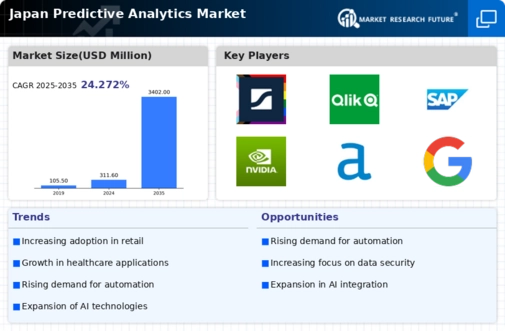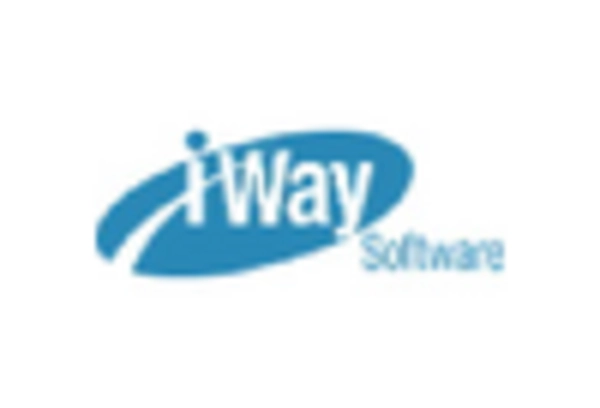Expansion of Cloud-Based Solutions
The shift towards cloud-based solutions is a pivotal driver for the predictive analytics market in Japan. Organizations are increasingly adopting cloud platforms to facilitate data storage, processing, and analysis, which enhances accessibility and scalability. This transition allows businesses to leverage predictive analytics tools without the need for extensive on-premises infrastructure, thereby reducing costs and improving operational agility. Recent data suggests that the cloud segment of the predictive analytics market is expected to grow by over 30% annually through 2027. As more companies embrace cloud technologies, the predictive analytics market is poised for substantial growth, enabling organizations to derive actionable insights from their data more efficiently.
Regulatory Compliance and Data Governance
The predictive analytics market in Japan is also driven by the need for regulatory compliance and robust data governance frameworks. As data privacy regulations become more stringent, organizations are compelled to adopt predictive analytics solutions that ensure compliance while maximizing data utility. This is particularly relevant in sectors such as finance and healthcare, where adherence to regulations is critical. The market for compliance-focused predictive analytics tools is expected to grow as companies seek to mitigate risks associated with data breaches and non-compliance. It is estimated that investments in such solutions could increase by 15% annually, reflecting the importance of regulatory considerations in shaping the predictive analytics market.
Rising Demand for Data-Driven Decision Making
the predictive analytics market in Japan experienced a notable surge in demand as organizations increasingly recognized the value of data-driven decision making. Companies across various sectors, including finance and manufacturing, are leveraging predictive analytics to enhance operational efficiency and improve customer experiences. According to recent estimates, the market is projected to grow at a CAGR of approximately 25% from 2025 to 2030. This growth is fueled by the need for businesses to remain competitive in a rapidly evolving landscape, where timely insights can lead to better strategic choices. As a result, investments in predictive analytics technologies are becoming a priority for many Japanese firms, indicating a robust trajectory for the predictive analytics market in the coming years.
Growing Focus on Customer Experience Enhancement
In Japan, the predictive analytics market is significantly influenced by the growing focus on enhancing customer experience. Businesses are increasingly utilizing predictive analytics to understand customer preferences and behaviors, allowing for more personalized marketing strategies and improved service delivery. This trend is particularly pronounced in the e-commerce and hospitality sectors, where companies leverage data insights to tailor offerings to individual customers. As organizations strive to meet the evolving expectations of consumers, the predictive analytics market is likely to expand, with investments in customer-centric analytics tools projected to increase by approximately 20% over the next few years. This emphasis on customer experience is reshaping the landscape of the predictive analytics market.
Integration of Artificial Intelligence Technologies
The integration of artificial intelligence (AI) technologies into the predictive analytics market is transforming how businesses in Japan analyze data. AI algorithms enhance the accuracy and efficiency of predictive models, enabling organizations to forecast trends and behaviors with greater precision. This trend is particularly evident in sectors such as retail and finance, where predictive analytics tools are increasingly utilized to optimize inventory management and risk assessment. The market for AI-driven predictive analytics solutions is expected to reach approximately $1 billion by 2026, reflecting a growing recognition of the potential benefits. As companies seek to harness the power of AI, the predictive analytics market is likely to witness significant advancements and innovations.

















Leave a Comment